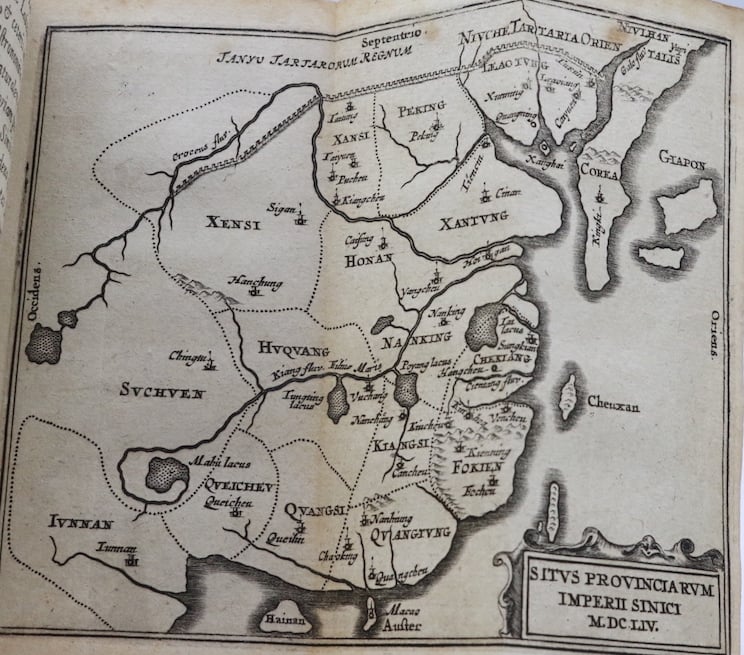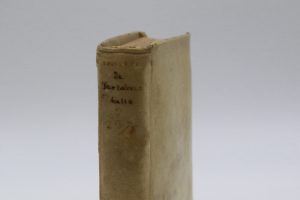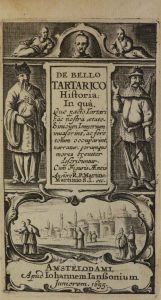
Library Tour – Eyewitness to the Fall of the Ming Dynasty, Part 1
Earlier in TBC’s blog series, we introduced the missionary-produced atlases of China, shedding light on their geographical contributions. If you’re intrigued, feel free to explore it here. However, the missionaries influence went beyond mapping terrain that they also played a crucial role in documenting significant historical events. Join us as we uncover their accounts, revealing a narrative that goes beyond maps and extends into the rich tapestry of China’s history.
Many missionaries were witnesses of the dynamic shift from the Ming to the Qing dynasty—a transformation vividly chronicled in their literary works. Among TBC’s library are many accounts of missionaries across time, but let’s take a look at two significant books that capture firsthand accounts of the tumultuous period marked by the decline of the Ming dynasty. Part One will introduce to you Martino Martini, S.J., and his experience watching the Qing shake the Ming to their core.
This is an important history of the Manchu invasion and conquest of the Chinese Empire, which began in the 17th century and ended with the establishment of the Manchu (Qing) Dynasty in 1644.
De bello Tartarico historia, penned by Jesuit priest Martino Martini, delves into the intricacies of the Qing conquest of China. Martini, having personally experienced the Qing conquest of Jiangsu and Zhejiang, lends a unique and valuable perspective to the narrative. Martini’s account, enriched by his firsthand experiences and letters from friends, provides a compelling insight into this significant historical event. Although he sometimes contradicts himself, and his account is often at odds with the way that modern historians interpret the facts, he did have the refreshing eye of an observer, much like a modern-day journalist might have.
In addition, Martino uncovered hidden historical materials about Jesuits and Christians in Ming and Qing Dynasty China. These materials revealed the Christian identities of key players in the late Ming political scene, filling gaps in previous histories. This not only deepens our grasp of cultural exchanges between China and the West but also contributes significantly to European readers’ insight into 17th-century China.
Thus, De bello Tartarico historia is celebrated among European scholars as a pivotal work. It is recognized as the first modern history of China in Europe, marking a crucial moment in understanding China’s political history during that era. Since its Latin debut in 1654, it swiftly garnered recognition within the cultural circles and captivated readers across Europe, leaving an enduring impact. Its influence was so profound that plenty of text versions emerged simultaneously, propelling it to the status of the best-selling book in Europe during that era. It was reprinted in some 25 editions in seven countries with five languages ranging from Latin, German, Italian, French, and English between 1654 and 1706.
Martino Martini was an Italian Jesuit missionary who delved into China in 1643 amid internal unrest. During turbulent times, he extensively explored China, collecting materials for his survey of China to determine the geographic position of many towns and special geomorphic features. Besides contributions within geographical area, he also engaged in pivotal discussions with the College of Cardinals in Rome, particularly in the understanding of Chinese culture. Unfortunately, Martino passed away in Hangzhou in 1661, leaving a lasting legacy in geographical study of China and the intricate dynamics of cultural exchange during his time.
This book, along with others in the Ron Anton Library for Chinese Studies historical collection, can be viewed by appointment at The Beijing Center. Contact us at [email protected] to visit!







